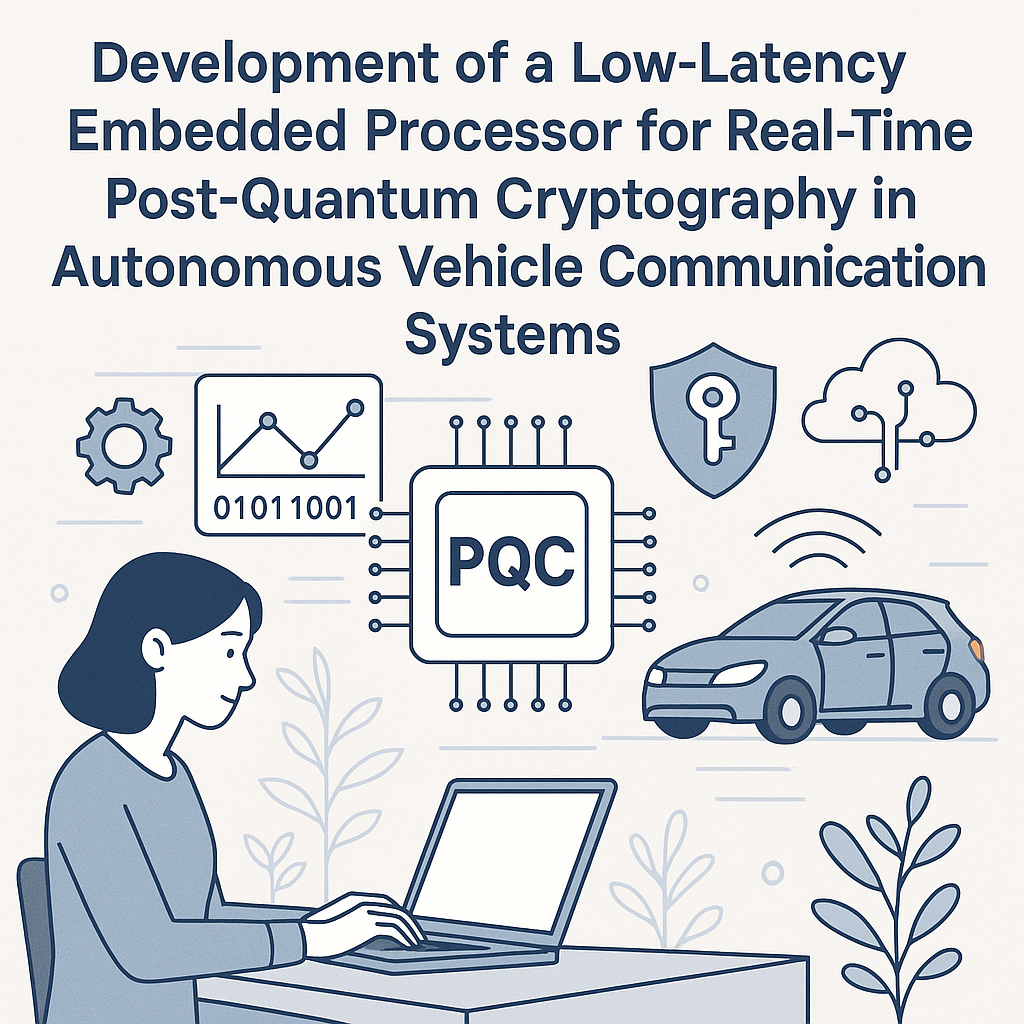Introduction
The rapid evolution of autonomous vehicles has brought about significant advancements in communication systems, particularly in the realm of security. As we shift towards a future where quantum computing becomes a reality, the need for robust post-quantum cryptography is paramount. This blog post explores the development of a low-latency embedded processor specifically designed for real-time post-quantum cryptography in autonomous vehicle communication systems.
Understanding the Need for Post-Quantum Cryptography
As quantum computers advance, traditional cryptographic algorithms may become vulnerable to attacks. This vulnerability necessitates the adoption of post-quantum cryptography (PQC) to ensure secure communications within autonomous vehicles. Key reasons for this shift include:
- Quantum Threat: Quantum computers can efficiently solve problems that underpin current encryption methods.
- Data Integrity: Ensuring the integrity of communication between vehicles is crucial for safety and reliability.
- Regulatory Compliance: Autonomous vehicles must adhere to stringent security standards to gain approval for public use.
Challenges in Developing Low-Latency Embedded Processors
Developing an embedded processor with low latency for real-time applications presents several technical challenges:
- Processing Power: Quantum-resistant algorithms often require more computational resources than classical algorithms.
- Energy Efficiency: Autonomous vehicles operate on limited energy resources, making energy-efficient processing critical.
- Integration with Existing Systems: The new processor must seamlessly integrate with existing vehicle communication architectures.
Key Features of the Low-Latency Embedded Processor
The design of a low-latency embedded processor for autonomous vehicles incorporates several innovative features:
- Optimized Architecture: The processor architecture is tailored to support the specific demands of PQC algorithms, ensuring efficient execution.
- Multi-core Processing: By utilizing multiple cores, the processor can handle simultaneous cryptographic operations, reducing latency.
- Hardware Acceleration: Specialized hardware accelerators for cryptographic functions enhance performance and reduce processing time.
- Real-Time Operating System: A real-time OS ensures that critical tasks, such as encryption and decryption, are prioritized for timely execution.
The Role of Machine Learning in Enhancing Security
Integrating machine learning (ML) techniques into the embedded processor can further enhance security in autonomous vehicle communications:
- Anomaly Detection: ML algorithms can identify unusual patterns in communication, signaling potential security threats.
- Adaptive Security Protocols: The processor can learn from past interactions, adapting its security protocols to provide dynamic responses to emerging threats.
Real-World Applications and Use Cases
Low-latency embedded processors for real-time PQC are crucial for several applications in autonomous vehicle communication systems:
- Vehicle-to-Vehicle (V2V) Communication: Ensures secure data exchange between vehicles, enhancing situational awareness and safety.
- Vehicle-to-Infrastructure (V2I) Communication: Facilitates safe interactions with traffic signals and other infrastructure, improving traffic management.
- Remote Software Updates: Ensures that software updates are securely transmitted to vehicles without compromising security.
Conclusion
The development of a low-latency embedded processor for real-time post-quantum cryptography is essential for securing autonomous vehicle communication systems against future threats posed by quantum computing. By addressing the unique challenges of processing power, energy efficiency, and integration, we can create a robust framework for safe and reliable autonomous driving. As technology continues to evolve, ongoing research and innovation will be crucial in maintaining the security and integrity of communications in this rapidly changing landscape.



